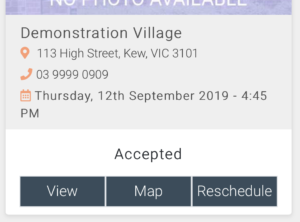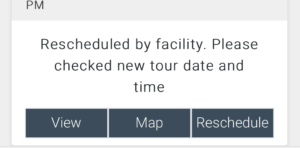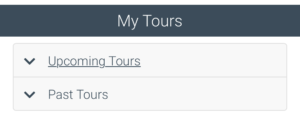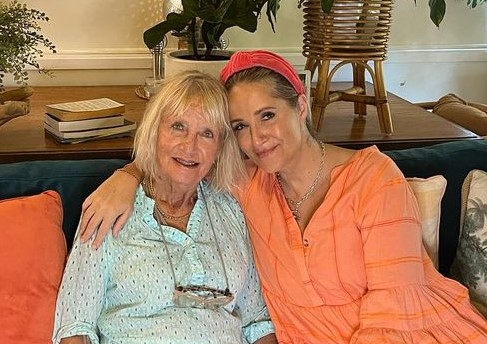Info Hub
Aged Care Industry
Aged Care Assessments
An Aged Care Assessment is the most important first step in the aged care entry process. During a face to face interview with a member of the government’s Aged Care Assessment Team, a comprehensive evaluation of the physical, medical, psychological, cultural, social and restorative care needs of a potential aged care resident takes place.
The outcome of this assessment will determine if the potential aged care resident is eligible for government subsidised aged care services and what level of service is most suitable. The outcome is communicated in writing through a letter addressed to the person who took the assessment.
Why is it required?
An Aged Care Assessment is needed to have the government pay for some or all of a potential resident’s aged care costs.
What information will we need?
The Aged Care Assessment doesn’t require the potential resident to fill in any forms, but the following information will be required:
- Details on how day-to-day activities are managed, and how much help is needed to fulfil them;
- Details on state of health. Medical evidence will be required, such as doctors reports, hospital discharge reports, current and past pharmaceutical prescriptions, details on diagnosed illnesses;
- Details on how much assistance is currently required to live at home – e.g. getting in and out of bed, using bathroom and toileting facilities, details on how meals are currently prepared;
- Details on whether respite or other formal home care services have been used, or are currently being used;
- A trusted person can assist the potential resident during the assessment (whether it is a family member, nominated representative, or a carer). The assessment occurs as a two way conversation therefore, the person being assessed can ask any relevant questions.
How can we organise an assessment?
Aged Care Decisions is not currently able to organise an Aged Care Assessment on your behalf.
You will need to contact My Aged Care to organise an Aged Care Assessment.
Web: An assessment can be requested online by going to My AgedCare: http://myagedcare.gov.au/referral
Phone: Call MyAgedCare on 1800 200 422
An assessment can also be requested by a GP, a doctor, a hospital nurse or administrator, a community nurse or other health care practitioners.
How long does the process take?
An assessment will occur within 30 days of a request being submitted online or by telephone. If the potential resident is in hospital an assessment will occur within 1-5 days.
The assessment itself takes approximately three hours, and can occur in a potential resident’s own home, or in a hospital.
An assessment outcome letter will typically be sent within a week of an assessment occurring.
What will the Aged Care Assessment let us do?
The Aged Care Assessment is a vital step that must be completed before entering aged care. It is the key element that determines whether someone is eligible to receive government’s subsidised aged care services or not.
Referral Codes
Aged Care Assessment outcome letters issued after 2016 will contain a series of 12 digit referral codes (e.g. 1-12345678901).
You may see Referral Codes for ‘Residential-Permanent’, ‘Residential Respite – Low Care’ or ‘Residential Respite – High Care’.
A referral code approves a person for certain types of government subsidised services. These codes will be required for Aged Care Decisions to gather appropriate aged care vacancy options.
An aged care provider will then use these codes to view a potential resident’s care plan and aged care assessment.
If a potential resident has not been approved for aged care services via the assessment outcome letter, a reassessment can be organised if a change occurs in medical circumstances or coping abilities.
What is a Referral Code? And why is it important?
The Australian Government provides the bulk of funding for the aged care system.
In order to have the Australian Government pay towards the cost of a persons care, they will need to have obtained an Aged Care Assessment, and received ‘Approval’ for residential aged care.
The ‘Approval’ will be for particular types of care – e.g. ‘Residential-Permanent’, ‘Residential Respite – Low Care’ or ‘Residential Respite – High Care’. These Approvals will be listed in the Aged Care Assessment outcome letter.
Aged Care Assessment outcome letters issued after 2016 will also contain a series of 12 digit referral codes (e.g. 1-12345678901). There will be a Referral Code for each type of approved care.
It is the Referral Codes that signal that a person has been approved for certain types of government subsidised services.
Aged Care Decisions, and the aged care providers we work with, will require these Referral Codes prior to considering a person for admission into aged care.
An aged care provider can also use these codes to view a potential resident’s care plan and aged care assessment.
If a potential resident has not been approved for aged care services via the assessment outcome letter, a reassessment can be organised if a change occurs in medical circumstances or coping abilities.
Centrelink Forms
Placement into aged care may involve completion of a Centrelink Assets & Income Assessment Form. This Form is the second vital step in the aged care entry process for most families.
Detailed financial information is provided to Centrelink or the Department of Veterans Affairs (DVA).
The outcome of this assessment should be completed prior to someone entering permanent residential aged care. If not done prior to entry, the potential resident may be charged the maximum level of fees.
An Assets & Income Assessment is not required for respite or transition care.
Which form do we have to fill out?
Which Form needs to be filled out depends on the circumstances of the person seeking care:
Currently Receiving A Pension
This section applies if the potential aged care resident is currently receiving some form of Australian Government Pension (e.g. Aged Pension, Service or Disability Support Pension).
- OWN THEIR OWN HOME: If the person owns, or part owns, their own home (including in a retirement village), then they must complete Centrelink Form SA485. Form SA485 can be downloaded by clicking here: https://www.humanservices.gov.au/individuals/forms/sa485
- DON’T OWN A HOME: If the person going into aged care does not own a home, then no Centrelink form will be required.
Not Receiving A Pension
If the person entering aged care does not currently receive a Pension, then they must complete Centrelink Form SA457 in order to have their income & assets assessed by Centrelink.
Form SA457 can be downloaded by clicking here: https://www.humanservices.gov.au/individuals/forms/sa457
If the person entering aged care does not wish to fill out Centrelink Form SA457 then they will be liable for the maximum applicable Means Tested Care Fee (currently $28,087.41 per annum), and will be liable to pay an Accommodation Payment (if applicable).
Home Care, Not Residential Aged Care
If the person wishes only to access an Australian Government Home Care Package, and does not presently wish to enter residential aged care, then they will be required to fill out Centrelink Form SA456. This form is only required if the person doesn’t currently get a means tested income support payment from the Australian Government
Form SA456 can be downloaded by clicking here: https://www.humanservices.gov.au/individuals/forms/sa456
Respite Care
If the person entering aged care is only seeking a respite (short term) stay then no Centrelink form needs to be filled out.
If the person intends to convert their stay into a permanent aged care admission, then the relevant Centrelink Form (see above) will need to be completed and returned.
Why is it required?
Assets and income of a potential aged care resident are assessed to determine the level of fees and charges that will be charged.
If this financial information is not provided to Centrelink, an aged care resident may be required to pay the maximum level of fees and charges.
For more information on how assets and income affects aged care fees, see the Aged Care Fees page.
How do we get this done?
Aged Care Decisions cannot organise an Assets and Income Assessment on your behalf. You will need to contact Centrelink to organise an Assets and Income Assessment.
The completed Form will need to be filled in, signed and returned to Centrelink or to the DVA together with all the required supporting documents.
If the form is returned prior to entering a residential care service, the initial fee notification advice will be valid for 120 days unless there is a significant change in circumstances.
How long does the process take?
Relevant documents should be compiled in the months prior to aged care being required.
Filling out the form may take a few hours.
The form must be submitted to a Centrelink office or the DVA, along with copies of required documentation.
The results of the assets & income assessment will typically be sent to the potential resident within 4-6 weeks after submitting the form to Centrelink.
Aged Care Fees
Overview
Four types of fees potentially apply for permanent residential aged care:
- Basic daily fee
- Means-tested care fee
- Accommodation payment
- Extra Services Fees (Additional Services Fee)
Short term (respite) care is treated differently from an aged care fees point of view.
Basic daily fee
Every potential aged care resident must pay the basic daily fee.
This fee is used for covering the day-to-day livings costs of residents such as meals, heating, cleaning. It is calculated as 85% of the Aged Pension.
The maximum daily fee which can be requested by a provider is $54.69 per day.
Means-tested care fee
The amount, if any, of a means-tested care fee will depend on the outcome of a Centrelink Assets & Income Assessment.
Generally, if assets are above $29,399.40 a means-tested care fee will apply.
If the means-tested care fee is applicable, it is capped at an annual amount of $28,087.41. A lifetime cap of $70,558.66 also applies.
The former primary residence may count as an asset, if a family member or carer is not, or has not, been living at the house. If the former house is included, its value is capped at $178,839.20.
Accommodation payment
If assessed assets are between $52,500-$178,839.20 a partial accommodation payment (called an accommodation contribution) will be required.
An incoming resident with assets above $178,839.20 will be required to make a full accommodation payment.
An Accommodation payment can be paid in a number of ways:
Lump Sum (Bond)
Also known as ‘Refundable Accommodation Deposit’ (RAD) or ‘Refundable Accommodation Contribution’ (RAC).
The amount charged will vary from facility to facility, and from room type to room type. Typically RAD’s range from $300,000 – $750,000. The average RAD in Australia is approximately $450,000.
Aged care providers must publish their maximum RAD, but a lower RAD can be negotiated one-on-one.
Until the lump sum is paid (max 6 mths) a daily fee will be charged (see below).
The RAD is fully refunded back to the resident upon leaving the aged care facility.
Daily Fee
Also known as a Daily Accommodation Payment (DAP) or Daily Accommodation Charge (DAC).
The daily fee is calculated by reference to the RAD – applying an interest rate (currently 4.07%) to the lump sum amount, then dividing by 365 to make a daily fee.
Much like rental payments, the DAP is not refundable upon exit.
Part Lump Sum + Part Daily Fee
This scenario involves paying the accommodation payment partially with a lump sum, and partially as a daily fee.
It is particularly useful when considering an aged care room that has a slightly higher RAD. A lower RAD can be paid upfront (e.g. 50% of the room price), with the balance paid as a daily fee.
The daily fee component (DAP/DAC) can be deducted from the lump sum component (RAD/RAC).
The average RAD across Australia is approximately $450,000, and can be as much as $1 million in inner city areas.
A resident has 30 days from placing into aged care to decide how they will pay the accommodation payment – using one of the methods above.
If lump sum (RAD) method is chosen, a resident has 6 months to physically pay the lump sum to the provider, until which time they will be charged a DAP.
Respite
An elderly person can access up to 63 days of subsidised short stay (respite) in an aged care facility per financial year if they have been assessed for respite care, and have a Respite Care Referral Code.
During this period the maximum that can be charged to a resident is the Basic Daily Fee ($54.69) and any Extra/Additional Service Fees that apply to that room.
Bonds & RADs - What to pay and when
If a potential aged care resident is liable to pay an Accommodation Payment they have the choice to make this payment as either:
- A lump sum – known as a Refundable Accommodation Deposit, or RAD; or
- A daily fee – known as the Daily Accommodation Payment, or DAP; or
- Part RAD and Part DAP
If the resident chooses to pay the Accommodation Payment as either a full RAD or partial RAD, under the Aged Care Act they have six (6) months to make payment of this amount.
Until the RAD is paid to the provider, the Accommodation Payment will be charged as a DAP, and most typically invoiced monthly.
Respite / short term stay in aged care
What is Respite?
Respite involves a short stay in an residential aged care facility. Residential respite care can be planned or scheduled on an emergency basis.
Respite can be used to provide a break to a carer. It is also often used as a “try before you buy” option for families considering aged care.
Respite is heavily subsidised by the Australian Government, meaning a potential aged care resident will pay minimal fees to access respite in a nursing home.
Accessing subsidised Respite
The first step to accessing government subsidised respite care in a nursing home is to ensure the potential resident has an Aged Care Assessment that provides approval for respite.
A potential resident can access subsidised respite if they have an approval for Residential Respite Low Care, or Residential Respite High Care.
If a potential resident has an Aged Care Assessment approving respite they can access up to 63 days per financial year of subsidised respite care.
Fees & costs for Respite
The fees for respite care operate differently to those applicable for permanent residential aged care.
If a potential aged care resident has an Aged Care Assessment approving respite care then the only compulsory fee the resident will have to pay for respite is the Basic Daily Fee, which is currently $52.25 per day.
A facility may choose to charge an Extra or Additional Services Fee, which will be expressed as a daily amount.
This covers additional services such as satellite TV, hairdressing, special therapies, etc. A potential aged care resident must agree, in advance, to pay such fees prior to moving in.
A respite resident does not have to pay any Means Tested Care Fee, nor are they liable for an Accommodation Payment (lump sum Refundable Accommodation Deposit, or Daily Accommodation Payment).
An aged care facility may charge a booking fee, which cannot be more than a full week’s Basic Daily Fee. The booking fee will act as a pre-payment, not an additional fee.
How long can we stay in Respite?
A resident who has an Aged Care Assessment approving respite care can access up to 63 days of respite per financial year. This allowance resets on 1 July every year.
The 63 day allowance can be extended in lots of 21 days. Reasons for this include carer stress, increase in care needs of the resident, and absence of the carer (e.g. for holiday or family circumstances).
The 21 day extension application must be done by the Aged Care Assessment Team member who initially did the Assessment of the potential aged care resident.
In general, an aged care facility will look for a resident to have a minimum stay of approximately 2 weeks although this is negotiated directly between the resident and the facility.
What if we don’t have an Assessment?
If a potential aged care resident does not have an Aged Care Assessment approving respite care then the resident will have to be a ‘fully private’ respite resident. This means the resident will have to pay a much higher level of fees to the facility for accessing a respite stay.
What is Power of Attorney & Guardianship?
Both ‘Power of Attorney’ and ‘Guardianship’ are legal terms relating to the authority that one person has to make decisions on behalf of another person. Both are relevant to aged care placement.
Power of Attorney
A person can appoint another person as their Power of Attorney, or ‘POA’ for short.
The decision to appoint another person as a POA is done through a formal written document. That document differs state by state, as do the laws relating to how a POA is created.
A POA can make both personal decisions (e.g. relating to medical care) and financial decisions (i.e. sign contracts) in place of another person.
There are typically two types of Power of Attorney that can be created:
- General Power of Attorney – this appointment is typically done for a set period, or for a set reason
- Enduring Power of Attorney – this appointment typically has no end date, and is done when a persons health or mental capacity may be decline.
Importantly, the person who has appointed a POA still retains their legal right to make decisions on their behalf.
Guardianship
Guardianship is a formal legal process that is commenced in a court or tribunal, the end point of which is to have a person appointed as the legal guardian of another person.
The exact process and requirements of guardianship differ state by state.
In an aged care context, a guardianship process may be used to appoint one or several people as legal guardians of an older person who has impaired capacity to make decisions in their own best interest.
In plain english, guardianship allows one or several people to override the legal decision making capacity of another person.
What forms do we have to fill out for aged care entry?
- Centrelink Forms – Read the Centrelink page to work out which forms must be filled in for your particular scenario. The Centrelink forms can be downloaded online.
- Aged Care Facility Application Forms – something that can be largely eliminated by using the free Aged Care Decisions placement service.
- Resident Agreement – this agreement sets out the fees & charges that will be payable by the resident, along with the rights and responsibilities of both the aged care resident, and the aged care facility.
- Accommodation Agreement – this is a special type of additional agreement that covers additional details relating to the room – including payment of an Accommodation Payment, any extra services costs, particular details of the room type, and other related matters.
Moving out / changing your mind / transferring facilities
The Aged Care Act provides that a new resident has up to 28 days after moving in to complete and return a signed copy of the Residents Agreement and Accommodation Agreement.
The Act also provides that any resident can provide 14 days written notice to an aged care facility in order to move out or transfer to another facility. Once this notice is up then the resident can move out or transfer at any time.
If a resident moves out or transfers to another aged care facility then any Refundable Accommodation Deposit that has been paid must be refunded back to the resident.
How to use this app
Accessing the menu
You can access the menu from any page by clicking on the orange [icon name=”bars”] menu icon in the top right hand side of any page.
Shortlisting a facility
You can shortlist facilities of interest by clicking on the  button from your Home Screen or from any facility page.
button from your Home Screen or from any facility page.
This will turn the button to  .
.
Doing so will save the facility to your  , which you can access from the orange [icon name=”bars”] Menu icon.
, which you can access from the orange [icon name=”bars”] Menu icon.
You can remove a facility from your Shortlist at any time by also clicking on the ![]() button.
button.
Schedule a tour
You can request a tour at any time with any facility in your customised Options Report.
To request a tour, simply navigate to the facility’s page by clicking on the photo or name from your Home Screen, or selecting the facility from your Shortlist page.
When on the facility page, click on the ![]() button.
button.
Select a preferred date by clicking on the orange [icon name=”calendar”] calendar icon.
Select a preferred time by clicking on the orange [icon name=”clock”] clock icon next to the calendar date field.
You can write a message to the provider in the box below.
Click the ![]() button to submit the request to the facility.
button to submit the request to the facility.
View All Tours Organised
You can see all of the tours you have requested & organised by selecting the “My Tours” option in the menu.
The page is divided into “Upcoming Tours” and “Past Tours”
Under “Upcoming Tours” you will see the status of tours you have requested, as either:
- Requested
- Confirmed
Tour Confirmation
Once the facility has received and confirmed your request, you will receive a message in your App.
Reschedule Tour
If, for whatever reason, you need to reschedule a Tour, navigate to the “My Tours” page, then click on “Reschedule” for the tour you wish to change.
Submit the new date & time of the tour, and click “Submit Reschedule Request”.
You will receive a confirmation or message back from the facility via your App.
Tour confirmations
Once a facility has received and confirmed your tour request, you will receive a notification message on your phone.

Clicking on the phone notification will take you to your “My Tours” page.
If your tour request has been accepted, you will see the message “Accepted“.

If the facility has proposed another date/time for the tour, you will see the message “Rescheduled by the facility. Please check new tour date and time“

If the proposed time is not suitable for you, simply click “Reschedule” to propose another time for the facility tour.
View all tours organised
You can see all of the tours you have requested & organised by selecting the “My Tours” option in the menu.

The page is divided into “Upcoming Tours” and “Past Tours“

Under “Upcoming Tours” you will see the status of tours you have requested, as either:
- Requested
- Accepted
- Rescheduled by facility
Reschedule/ cancel a tour
If, for whatever reason, you need to reschedule a Tour, navigate to the “My Tours” page via the App menu.

Click on “Reschedule” for the tour you wish to change.

Submit the new date & time of the tour.

and click “Submit Reschedule Request“
You will receive a confirmation or message back from the facility via your App.
Send a private message to a facility
You can send a direct private message to any of the aged care facilities listed in your App.
From your Home screen, or “My Shortlist”, simply click the photo, name or “View Details” button of the facility you wish to contact.
Click the “Message” to the right hand side of the blue page menu bar.

Type out your message.
Once finished, click “Send Quick Message“.
Your message will be sent immediately to the relevant Facility Manager or Admissions contact person at the facility in question.
Once they have responded, you will receive a notification on your phone.
View message history with a facility
You can view the message history between yourself and a facility by clicking on on the same “Message” menu option in a facility page, then clicking on the “View All Messages” button.
View your message inbox
You can view your entire message history with all facilities by clicking on the “Messages” button in the menu bar.
The message history with each recipient is listed down the page.
If you have a new message, an orange dot will show against the message history.
Sharing with a family member
You can share this App, the aged care facility options, and message history, with any family member or friend.
To do this, click on ![]() in the orange [icon name=”bars”] menu.
in the orange [icon name=”bars”] menu.
This will automatically generate a new SMS in your phone’s messaging function.
Simply select the recipient from your phone book.
Its important that you dont edit the text of the SMS message, as it contains the ACD Privacy Code that will enable the recipient to download and open up the App with the contents that you are sharing.
Saving and sending referral codes
Referral Codes are issued by the Australian Government’s My Aged Care department, following a successful Aged Care Assessment.
They have two purposes – (i) as evidence of someone’s approval for a type of care, and (ii) to permit aged care providers to access the Aged Care Assessment and understand detailed clinical information.
Every aged care facility you speak to will want to know the Referral Codes.
To make it easier, you can save your Referral Codes in this App. Doing so will automatically share them with the aged care providers you shortlist.
To access the Referral Codes page, click on ![]() in the [icon name=”bars”] Menu.
in the [icon name=”bars”] Menu.
You can enter & save your Referral Codes in this page. Once saved they will be shared with facilities.
General
Who is Aged Care Decisions?
Aged Care Decisions is a 100% independently owned and operated organisation.
Started in 2013 by two regular aged care consumers who wanted a better way for families to make more informed decisions, our organisation is not owned or controlled by any particular aged care provider.
Read more about Aged Care Decisions
To ensure continued transparency and integrity, Aged Care Decisions has a Voluntary Code of Conduct that enshrines our committment to transparency, impartiality and accountability.
How can we guarantee your support?
Aged Care Decisions is a 100% free aged care placement service for families. We guarantee all residents and families the support they need in their aged care placement journey. View our Client Support Guarantee.
What services does Aged Care Decisions provide?
We provide end-to-end support to families, providers and health professionals.
Families
Support through finding aged care vacancies which match care needs, preferences and budget.
Providers
Support by providing highly qualified placement referrals.
Health Professionals
Support in providing Emergency Placement services for families needing to place a loved one who is discharging from hospital.
How do we get paid?
First off – Aged Care Decisions is 100% free of charge to families. No if’s, no but’s, and no hidden charges.
We charge aged care providers a set industry standard fee for undertaking customer service & admissions services on their behalf.
Importantly, under Australian law this fee cannot be passed onto you – under any circumstance.
Every aged care facility in Australia pays the exact same amount – regardless of who they are, or who the aged care resident is.
Our unique model means that Aged Care Decisions has no financial motivation to recommend one facility over another. That fee is exactly the same regardless of your financial status, RAD or care level.
Importantly – you are always in control. You can choose to fully use our service and then select a facility not introduced by our team.
Even if you ultimately select an aged care facility not introduced by Aged Care Decisions, our service will still remain 100% free of charge.
Our only desire is that you and your family select an aged care facility that meets your needs. Only you can decide whether a particular facility is right for you or a loved one.
Our role is to reduce the time and stress involved, by matching you to facilities that have vacancies and meet your care needs, budget, location and other preferences.
Families
What can this service do for our family?
Aged Care Decisions is Australia’s largest aged care placement service.
We help families by:
- Providing detailed information & advice about how aged care works (including how fees work)
- Preparing a customised report – which matches the care needs, preferences & budget of the person entering care with room vacancies in their area.
- Assigning a dedicated Placement Specialist – who will assist you and your family in every step of the placement journey
- Booking tours on your behalf
- Interacting with Aged Care facility admissions staff on your behalf
Why should families use Aged Care Decisions?
Aged Care Decisions is a fast, free and independent service that works with families to assist in finding Aged Care vacancies for a loved one. Our trained and professional Placement Specialists will prepare a customised list of vacancies that match the needs and preferences of the person entering aged care within your local area. We also assist families to coordinate tours and work through the paperwork and logistics associated with placing in aged care.
This allows families to make an independent and hassle-free decision with no stress and for FREE!
What do other families say about your service?
Have a read what other families have said about our service through Google Reviews:
[brb_collection id=”474″]
How much does your service cost for families?
We act on behalf of the family to find the best vacancy match suited to their care needs and preferences. Our service is a 100% free for families to use because the providers pay us an industry standard placement fee upon the resident placing into the facility.
How many facilities/ Providers does Aged Care Decisions work with?
Aged Care Decisions is Australia’s largest residential aged care placement service. We work with over 1200 Aged Care facilities across Australia.
Every aged care provider registered in our system must be currently accredited and licensed by the Australian Government’s Aged Care Quality & Safety Commission.
If an aged care facility loses its accreditation for any reason, we will cease referring families to that facility until it regains its registered status.
How do you create a customised report?
By utilising our national database of Partner facilities, Aged Care Decisions assists families to identify suitable vacancy options based on the care needs, preferences and budget of the person entering Aged Care. This information is matched with current Aged Care vacancies within the area of interest.
Aged Care Decisions does not recommend one facility over another.
The decision is in your hands, you choose which facility is best for you, your family and the person entering Aged Care.
How can we find aged care vacancies?
Aged Care facilities accommodate for different types of care needs. Aged Care Decisions assists you by compiling a customised list of vacancies that match the care needs, preferences and budget of the person entering Aged Care. We also assist with coordinating tours and any other queries or questions the family may have.












